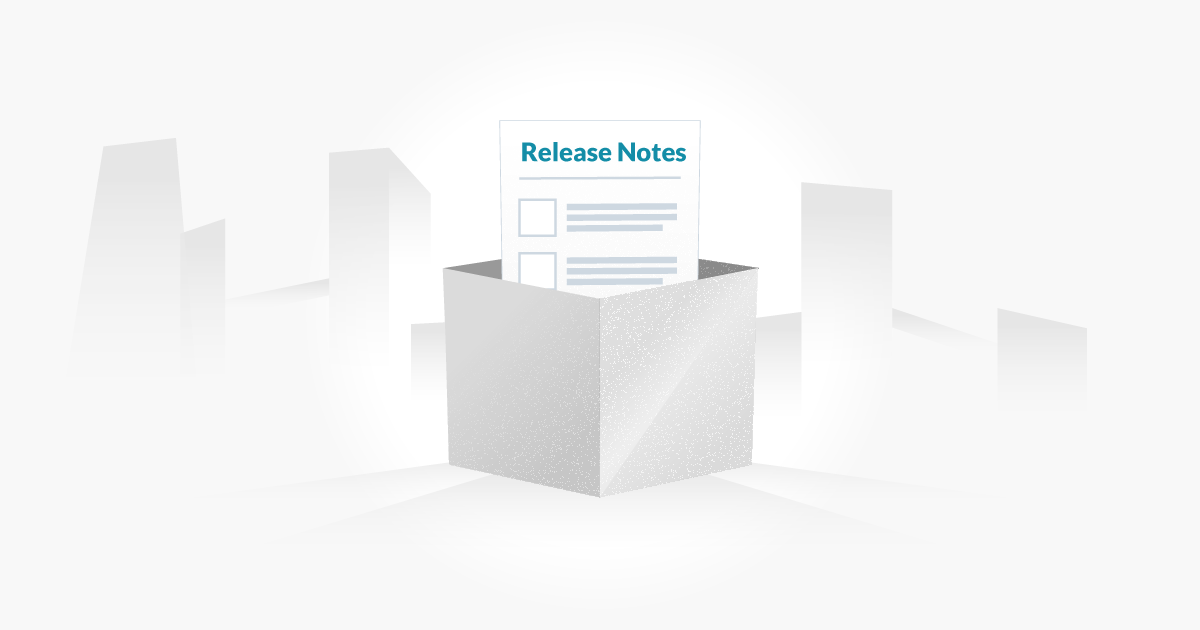Agile development means faster and more frequent releases. With more features being released, more bugs being fixed, and more improvements and changes in general happening, you need to keep your users in the loop with release notes. In this article, we’re going to talk about the importance of writing release notes and provide some tips for writing good release notes.

Why Release Notes Matter
Release notes provide value in a lot of areas including marketing, support, and feature engagement. Here are some of the reasons we think release notes are important.
Release Notes Inform Users of New Features
Release notes can serve as a great way to get users engaged with your product. Say you just released a new feature… why not let your customers know by including that in your release notes? Informing your users of new features (and fixes) shows them that you’re listening to their feedback and that you’re actively working to improve the product. This makes users feel valued. Educating your users about how a new feature works can also be done using your release notes, or by linking out to additional documentation.
Release Notes Improve Team & Customer Communication
Release notes serve as a great “source of truth” (at least at a high level) for what has changed. Sales and marketing teams can use release notes as a resource for when they talk to customers and plan new content. The very practice of writing release notes as a team can improve communication and get more team members aligned on the release. Support teams can reference release notes, or point customers directly to them, as they receive questions or feedback about the product.
Release Notes Tell Your Product’s Story
As your product evolves over time, having a historical log of these changes, improvements, and fixes helps tell your product’s story. Release notes are a celebration of your team’s work and the evolution of your product’s growth. A good change log or set of release notes can be your product’s historical diary.
Tips For Writing Better Release Notes
Good release notes are clear, concise, organized and accessible. Here are some tips for writing and publishing release notes.
Write For Humans
Drop the tech lingo and leave out acronyms. Don’t make assumptions that people will understand you when writing release notes. Make them as clear as possible, in a human-to-human tone. “Bug fixes and improvements” — this isn’t helpful. What was fixed? What was improved? Provide those details; your users want to know.
Show Value
Release notes are a great opportunity to show what you’re working on, and that what you’re working on actually adds value to your users. Focus on the value of new features in your release notes, and if you’re struggling on how to do that, ask your marketing team for help.
Make Them Accessible
Release notes should be easily accessible. Surprising customers with unannounced changes can catch them off guard when they’re used to your product working certain ways. Release notes can be used as a marketing or sales tool, so don’t hide them behind authentication or deep inside your app. Make them easy to find, where existing customers, new customers, and prospective customers call all find them. You may even want to consider linking to them inside marketing emails when you release new features.
Keep Them Organized
In any given release, you could have bug fixes, new features, improvements, and maybe even deprecated features. Therefore, organizing your release notes in a way that is easy to read allows your users to quickly scan your notes for what they’re looking for. Use headers, bullet points, and break things out into different sections.
Who owns the release notes?
Marketing? Support? Product? The answer varies. It really depends on how your team/company is structured, who owns what, how many resources you have, the goals of each team, etc. Typically, the first version of release notes comes from the product team. From there, customer support and marketing can work together to make sure the release notes are written to show value, and that they’re organized. The key here is to make sure someone owns the release notes. That’s the important part; that they’re actually being written and published in a timely manner.
Conclusion
In conclusion, writing release notes is an important part of the software development process. Release notes are a multi-faceted tool used across marketing, support, sales, and the team internally. Customers appreciate knowing what’s changed, been fixed, or been removed from your application. Keep them in the loop by writing good release notes and making them easily accessible.

